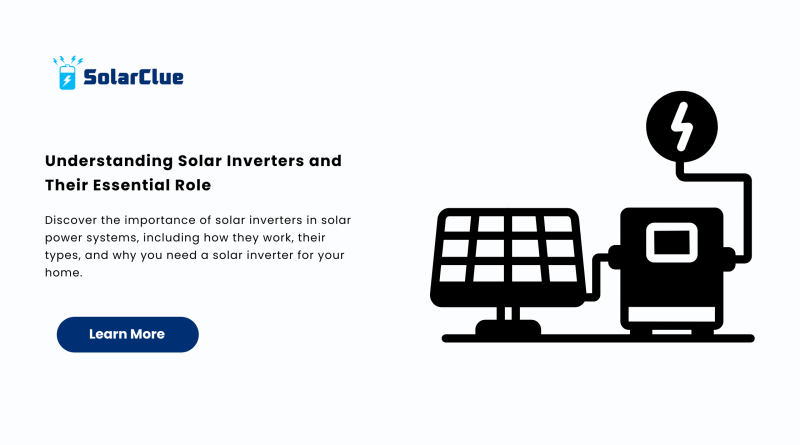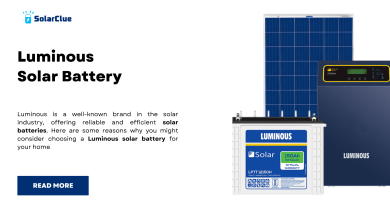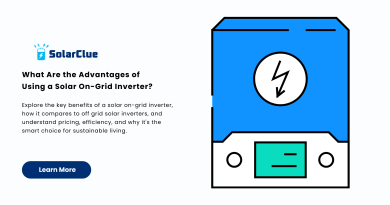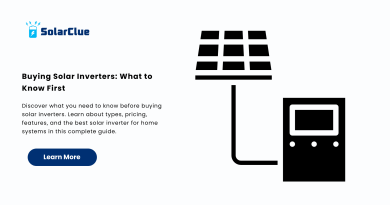Understanding Solar Inverters and Their Essential Role
In recent years, solar energy has become one of the most popular renewable energy sources, and the technology surrounding it has evolved rapidly. A key component of any solar power system is the solar inverter. Whether you’re considering installing solar panels at home or expanding an existing solar power system, understanding the role of solar inverters is crucial. This comprehensive guide will explain what solar inverters are, their different types, and why they are essential for your solar energy setup.
Table of Contents
What Is a Solar Inverter?
A solar inverter is a device that converts the direct current (DC) electricity generated by solar panels into alternating current (AC) electricity. AC is the type of electricity used by most household appliances. Without a solar inverter, you wouldn’t be able to use the electricity your solar power system generates. In simple terms, the solar inverter plays a pivotal role in making solar energy usable for everyday life.
Types of Solar Inverters
There are several types of solar inverters available, each with its specific advantages. The choice of which one to use depends on factors such as the size of your solar power system, your energy needs, and your budget. Below are the most common types of solar inverters:
1. String Inverters
The most common type of solar inverter is the string inverter. It connects all the solar panels in a series (or “string”) and converts the DC power to AC. While they are efficient and cost-effective for many systems, their performance can be affected by shading or dirt on individual panels.
2. Microinverters
Microinverters are installed on each individual solar panel, converting the DC power from each panel to AC power separately. This allows each panel to perform independently, meaning shading or dirt on one panel doesn’t affect the performance of the others. While microinverters are more expensive, they offer better overall performance in certain scenarios.
3. Hybrid Inverters
A hybrid inverter is a combination of a solar inverter and a battery inverter. This type of inverter allows you to store the excess energy generated by your solar power system in batteries, providing power during periods of low sunlight or power outages.
4. Power Optimizers
Power optimizers are used in conjunction with string inverters and improve their performance by ensuring that each panel operates at its maximum potential. They work by conditioning the power from each panel before sending it to the inverter, thus reducing energy loss.
The Role of Solar Inverters in Your Solar Power System
The solar inverter is not just a critical component; it is the brain of your solar power system. Here are the primary functions of a solar inverter:
1. Converting DC to AC Power
The most crucial role of the solar inverter is to convert the DC electricity produced by your solar panels into AC power, which is the standard for household energy use. Without this conversion, the energy generated by the solar panels would be unusable for daily appliances.
2. Maximizing Efficiency
Modern solar inverters are equipped with Maximum Power Point Tracking (MPPT) technology. MPPT optimizes the energy output from your solar panels, ensuring that you get the most efficient performance from your system, even when conditions such as temperature or sunlight fluctuate.
3. Monitoring and Data Collection
Many solar inverters come with monitoring capabilities, allowing you to track the performance of your solar power system in real-time. This feature is valuable for identifying potential issues and ensuring your system is working at its best.
4. Ensuring Safety
Solar inverters are designed with built-in safety features, such as anti-islanding protection, which disconnects the system from the grid during a power outage. This prevents the inverter from supplying power to the grid, protecting both the solar power system and the utility workers repairing the grid.
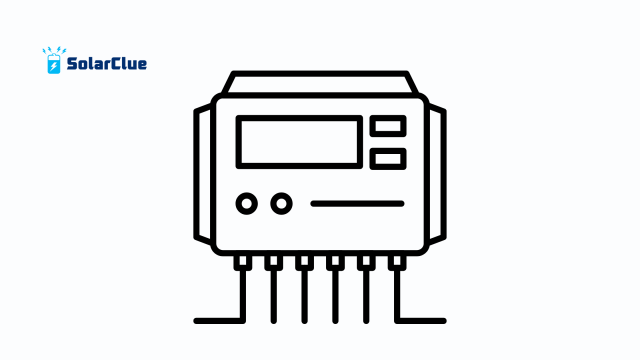
Why Do You Need a Solar Inverter for Your Home?
If you’re considering installing a solar power system for your home, choosing the right solar inverter for your home is essential. Here’s why:
1. Optimized Energy Use
A solar inverter for home ensures that the electricity generated by your solar panels is efficiently converted into usable power for your household. It also manages energy flow between the panels, battery storage (if installed), and the grid, maximizing the performance of your entire system.
2. Increased Energy Savings
The better your solar inverter is at converting energy, the more electricity you can use directly from your system, reducing your reliance on the grid and lowering your energy bills. Over time, this leads to significant savings.
3. Improved System Lifespan
A high-quality solar inverter helps ensure that your solar power system functions effectively for many years. Proper monitoring and efficient energy conversion reduce the wear and tear on your system, which in turn extends its lifespan.
4. Flexibility and Scalability
Choosing the right solar inverter allows for greater flexibility in scaling your system. Whether you start with a few panels and later decide to expand your system, a good solar inverter can accommodate these changes without the need for a complete overhaul of the system.
How to Choose the Right Solar Inverter for Your Home
When selecting a solar inverter for your home, there are several factors to consider:
1. System Size and Capacity
The size of your solar power system determines the type of inverter you’ll need. For larger systems, string inverters or hybrid inverters may be more suitable, while smaller systems may benefit from microinverters or power optimizers.
2. Efficiency and Performance
Look for an inverter with high efficiency and a good MPPT feature. This ensures that your solar power system works at optimal levels, providing you with the maximum possible energy savings.
3. Warranty and Lifespan
The lifespan of a solar inverter is typically 10 to 15 years, so ensure you choose one that comes with a reliable warranty. A longer warranty offers peace of mind and guarantees the performance of your solar inverter.
4. Cost
The cost of the inverter varies depending on the type and brand. Consider your budget and long-term savings when making your decision. Though microinverters are more expensive, they may offer better returns for homes with high energy consumption or shading issues.
FAQs
Q1: How long does a solar inverter last?
A high-quality solar inverter can last anywhere between 10 to 15 years, depending on the brand, type, and maintenance.
Q2: Can I install a solar inverter myself?
It’s highly recommended to have a professional install your solar inverter to ensure proper setup, safety, and optimal performance.
Q3: What happens if the solar inverter fails?
If a solar inverter fails, your solar panels will still generate electricity, but it won’t be usable in your home until the inverter is repaired or replaced.
Q4: How can I monitor my solar inverter?
Many modern solar inverters come with monitoring features that allow you to track your system’s performance via a smartphone app or online dashboard.
In conclusion, a solar inverter is an essential component of any solar power system, ensuring the efficient conversion and use of solar energy. Choosing the right inverter for your needs can significantly impact the performance and savings of your system. If you’re ready to make the most of solar energy, visit SolarClue and explore our range of products and services to help you get started on your solar journey. If you want to explore our blog, visit www.blog.solarclue.com

